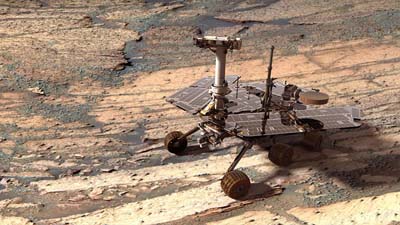Solar System is the name we have give to our cosmic surroundings. Solar system consists of the Sun, planets, moons, asteroids, comets, dust, and gases. Sun is the main component of the solar system as it comprises more than 98% of the mass of the entire solar system. Second massive object in the solar system is Jupiter which is only 1/10th the diameter and less than 1% the mass of the Sun.
We are stuck to Earth to study the solar system and our earliest astronomers had a lot of trouble explaining things while living on this spinning ball. Ancient Greeks were first to declare earth as a ball and even measure its size with great accuracy. The idea that Earth is stationary got hold because of the obvious intuition we derived from observations we did on the earth. The thinking was that the Moon, Sun, and stars were fixed to crystal spheres that spun around the Earth at different rates. This thought was simple and on the surface looked good but it lacked good prediction.
Nicolaus Copernicus in 1543 put forward his theory putting Sun at the center but it also lacked good model for predicting planetary motions. Astronomer Johannes Kepler working on the observations by his mentor Tycho Brahe, realized the planets moved around the Sun in ellipses and not circles. This theory helped Newton to apply physics and calculus to determine how gravity worked, and led to a good understanding of how planetary motion works.
The Sun is the most massive object in the solar system and is responsible for motion of all other objects in it. The whole name solar system is named after the sun (sol = sun). Planets revolve around it and the biggest planet is Jupiter which is 11 times larger than the Earth in diameter and a thousand times bigger in volume.
International Astronomical Union (IAU) defines a planet as a celestial body that (a) is in orbit around the Sun, (b) has sufficient mass for its self-gravity to overcome rigid body forces so that it assumes a hydrostatic equilibrium (nearly round) shape, and (c) has cleared the neighborhood around its orbit.
Planets’ orbits lie in a relatively flat disk. That is the orbit of Mercury lies on the same plane as that of Jupiter. Some trends of our solar system are that the inner planets like Mercury, Venus, Earth, and Mars are all small and rocky whereas the next four Jupiter, Saturn, Uranus, and Neptune are large and gaseous. Asteroid belt lies between Mars and Jupiter with billions of rocks revolving around the sun.
The place beyond the orbit of Neptune are called Kuiper Belt and has collection of rocky ice balls. Kuiper belt objects can be over a thousand miles across, but most are far smaller. When we move billions of kilometers from the Sun, the Kuiper Belt Objects forms a spherical cloud called the Oort Cloud and they don’t follow the plane of the inner solar system, but orbit every which way.
These trend tell us that roughly 4.6 billion years ago a massive cloud floated in space but it began to merge possibly due to shockwave from nearby exploding star. This compressed the cloud and gravity took over. Since the cloud was rotating the compression made the rotational velocity even bigger to conserve angular momentum. This increase in rotation flattened into a disk. As the cloud became smaller, it got denser and hotter in the center. The material on the edge of the disk clump together and gravity worked its magic to increase its size and planetesimals (baby planets) were formed.
The material collected at the center of the disk became protostar It got so hot that hydrogen fused into helium and nuclear fusion reaction was initiated. This marks the birth of a star (Sun). Solar radiation and solar wind blew away the leftover disk material and the solar system was born. Hydrogen and helium being a lighter element moved to the outer edged as they couldn’t stand sun’s wind and planets were unable to hold them either. This led to the formation of gas giants on the outer solar system.
Water was present at that time as well in form of ice past Neptune orbit. The material between Mars and Jupiter couldn’t form a planet because of Jupiter’s massive gravity.
This theory is not merely a guesswork but it’s a process we have been observing for decades on the other part of the universe. We have seen star formation from gas clouds and have even seen protodisk around them. It is safe to assume that we are not the ONE but one of the solar system of the universe.





